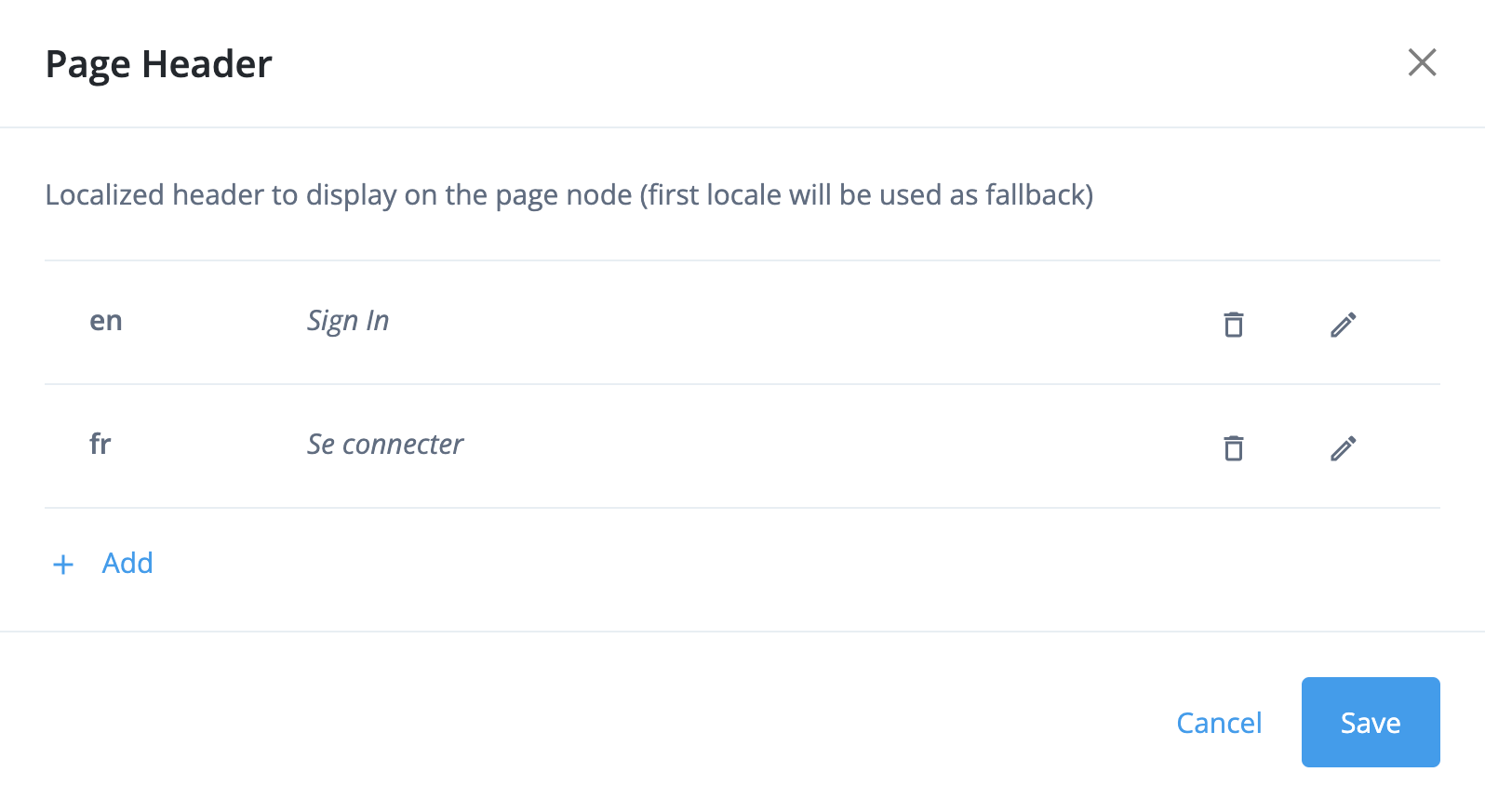Localize hosted pages
PingOne Advanced Identity Cloud lets you localize hosted pages to support the different languages of your
end users. Use ISO-639-1 language codes (for
example fr and de) to provide locale specific content in as many locales as you need.
Localize at feature level
Localize related features
You can localize the following features related to hosted journey and account pages:
| Feature | Description |
|---|---|
Hosted pages |
Learn more in Localize headers and footers and Localize the favicon and theme logo. |
Security questions |
Learn more in Security questions. |
Terms and conditions |
Learn more in Terms and conditions. |
Email templates |
Learn more in Email templates. |
Localize journey authentication nodes
You can individually localize authentication nodes that display content in hosted journey pages. For example, the Page node lets you add content to the Page Header property to display an initial journey message to end users. You can define as many localized versions of the message as you need:

Localize at UI level
You can localize static content and server messages in the hosted pages using translation configuration. Learn more in Localize tenant admin console and hosted pages.
Specify a preferred language for journey pages
By default, Advanced Identity Cloud localizes the content of journey pages using the value of the Accept-Language header, which is typically derived from the language settings in the end-user’s browser. You can override this behavior by appending a locale query parameter to the journey URL.
For example, to set the language to French, append locale=fr to the journey URL:
https://<tenant-env-fqdn>/am/XUI/?realm=/alpha&locale=fr&authIndexType=service&authIndexValue=LoginThe language used to localize journey pages is determined in the following order of priority:
-
The
localequery parameter in the journey URL (for example,&locale=fr). -
The language preference set in the end-user’s browser.
-
The default locale for hosted pages (
en), used when neither a query parameter nor a browser language is provided.